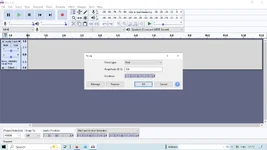Good morning Quesne, I don't know your technical knowledge level nor what equipment/software you have to hand so please excuse any "grannie's eggs" factor in this reply!
To get consistent and translatable (to other people) noise measurements it is important to have a specified MO. That means for mic pres say, a proper termination at the input. EU is mostly 200 Ohms and USA 150R but in practice it makes very little difference in my experience. The terminating R should be Metal Film and in an XLR plug for shielding.
Noise must of course be specified against a standard input level but since that would be around 1mV and balanced. That is hard for the home bod to generate accurately. In the past I have used 1kHz at 100mV (-20dBV) and as 'precision' attenuator as I could make. You need a known input voltage to find the exact gain since obviously more gain = more noise. You set the 100mV with a decent DMMeter.
Or, the quick and dirty way is to try to speak into the mic at a consistent level and fixed distance. Record at -20dBFS then swap mic for term' plug. Many would say this is a more "real world" way to specify noise? Or, you can have a noise generator, a speaker at say 500mm and feed it 1kHz and check the SPL with a meter (or phone?)
Then, how do you express the results? You could measure the noise output of your AI but as what? To be really accurate you need a true rms meter. Weighted or unweighted and which curve? Better I think to just give the DAW figure in dBFS. Some DAWs, Samplitude is one, give an actual numerical value as well as the dBFS 'bar'. For consistency across other people maybe stick to Audacity?
And lastly it is instructive to run the signal through Right Mark Audio Analyser. The RTA function gives you a graph that can show up unexpected hums and other nasties!
In practice I have found with dynamic mics which need the most low noise gain, modern AI pre amps are better than the ambient noise pickup in my room. Even at a very, subjectively silent 2am there is background noise above electronic noise. That result is for a MOTU M4, an NI KA6 and even a humble Behringer Xenyx mixer. The M4 has a slight edge on the rest.
Dave.


